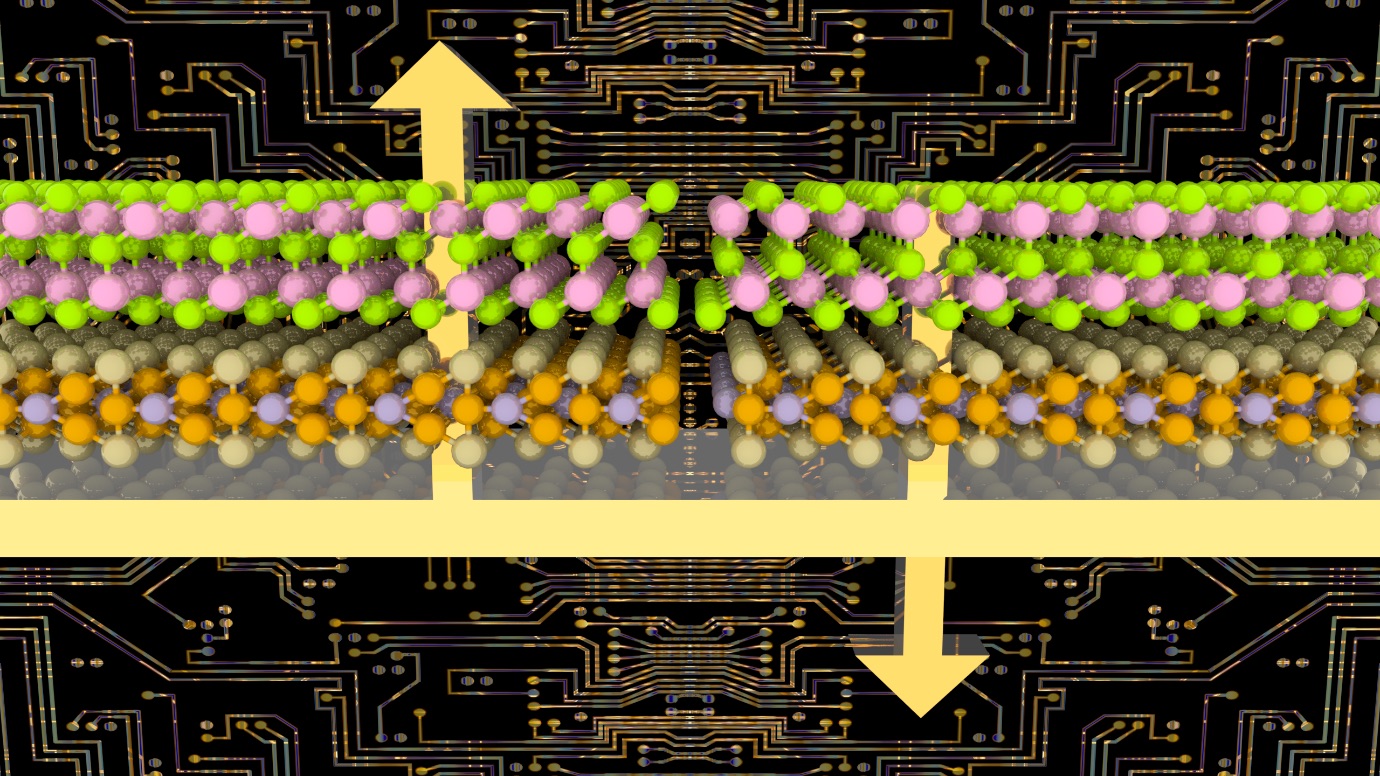2D 'multiferroic' stack shows potential for memory and FETs

Australian team creates new material that combines the properties of the component ferroelectric and ferromagnetic materials
A new study, led by RMIT (Royal Melbourne Institute of Technology) stacks two different types of 2D materials to create a hybrid material with properties that could be used in future memory and field-effect transistors. Most significantly, the electronic properties of the stacked structure can be controlled without the need for external strain, opening the way for use in future low-energy transistors.
The work uses two atomically-thin materials: a film of a ferroelectric compound semiconductor, and another film of a magnetic material. By stacking the two 2D materials together, the researchers create a ‘multiferroic’ material that combines the unique properties of the component ferroelectric and ferromagnetic materials.
Specifically, the researchers found they could use the intrinsic ferroelectric properties to tune the Schottky barrier height of the In2Se3/ Fe3GeTe2 heterostructure rather than using applied strain, that is required by other systems.
Being able to tune the height of the barrier is needed to convert current from alternating (AC) to direct (DC).
The resulting, switchable Schottky barrier structure can form an essential component in a two-dimensional FET that can be operated by switching the intrinsic ferroelectric polarisation, rather than by the application of external strain.
The switchable 2D Schottky diode device (pictured above) is formed by the interface of the 2D metal FGT (lower layer) and the 2D ferroelectric In2Se3 (upper layer).
This work employs a heterostructure of two 2D monolayers: In2Se3 and Fe3GeTe2(usually abbreviated to ‘FGT’), where In2Se3 is a ferroelectric semiconductor and FGT is a magnetic/ferromagnetic material.
“Our findings show that the In2Se3/ Fe3GeTe2 provides properties comparable to other heterostructures but without the need of external strain,” says corresponding author Michelle Spencer. “Not only can we control the barrier height with this heterostructure, but we can also switch between an n-type and p-type Schottky barrier.”
Such controllability and tunability of the In2Se3/ Fe3GeTe2 heterostructure can substantially broaden its device potential in future low-energy electronic devices.
“We found a significant change in the structural and electronic properties switching between the configurations of In2Se3. Such changes make this heterostructure useful as a switchable 2D Schottky diode device,” said lead author Maria Javaid.
As well as introducing a new possible avenue towards multiferroic nanodevices, the work will motivate experimentalists in this field to explore further opportunities for the use of In2Se3/FGT in future low-energy electronic devices, for example:
Synthesising a new multiferroic heterojunction that has the ability to ‘tune’ the Schottky barrier height, and switch between an n-type and p-type, via a switch in ferroelectric polarisation.
REF
'Tuning the Schottky barrier height in a multiferroic In2Se3/ Fe3GeTe2 van der Waals heterojunction' by M. Javaid et al; Nanoscale, Volume 14 Issue 11, March 2022.


































